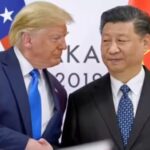Global markets experienced significant declines on October 10, prompted by an announcement from US President Donald Trump regarding a 100% tariff on Chinese imports. The news sent shockwaves through various financial sectors, particularly impacting equities and digital assets. Within mere minutes, the crypto market faced a tumultuous aftermath, with nearly $20 billion wiped out from leveraged positions as forced liquidations swept across trading platforms.
As the turbulence escalated, major centralized exchanges, including Binance, encountered significant operational issues. Users reported widespread problems such as frozen dashboards, failing stop-loss mechanisms, and abrupt flash crashes that momentarily drove several cryptocurrencies near zero. This series of disruptions led to mounting frustration within trading communities, as many began to speculate whether the root cause lay in system glitches or potential market manipulation.
In light of these claims, Kris Marszalek, CEO of Crypto.com, called for an independent investigation into the exchanges that suffered the most liquidations during the chaos. He asserted that billions in user funds vanished virtually overnight, emphasizing the need for regulatory intervention to safeguard traders’ investments. Marszalek urged regulators to scrutinize exchanges for their trading practices and ensure that all trades were properly priced amid the turmoil.
Contributing to the discourse, OKX CEO Star Xu suggested that Binance played a role in exacerbating the market situation. He criticized exchanges that manipulate token prices through hype and misleading practices, insisting such strategies ultimately undermine trust and can be disastrous for the industry as a whole. Xu drew parallels to the controversial collapse of FTX in 2022, pointing out that while attempts to eliminate competitors may yield short-term victories, they often lead to massive systemic failures affecting the broader market.
As the discussion on accountability continued, allegations emerged regarding vulnerabilities within Binance’s Unified Account system, which permits users to use various assets as collateral for leveraged trading. According to crypto analyst Wu Blockchain, the crash could have been triggered when collateral values plummeted—leading to rapid margin calls and subsequent liquidation of user positions. The report suggested that automated trading bots may have exacerbated the downturn by executing sell orders systemically.
This situation reignited concerns about the transparency and liquidity of crypto exchanges, especially during crisis periods. Wu Blockchain also noted the timing of the crash, occurring right between Binance’s announcement to adjust oracle prices and its implementation, suggesting a potential premeditated nature to the attack.
Compounding the frustrations were numerous reports from Binance users who could not execute trades, withdraw assets, or activate stop-loss orders throughout the market collapse. Social media platforms saw a surge of complaints, with many accusing Binance of market manipulation and system failures during crucial trading moments, further complicating the public’s trust in centralized exchanges.
In reaction to these events, Binance expressed regret to the affected users and committed to reimbursements. Co-founder Yi He attributed the disturbances to “extraordinary market turbulence and user surges,” and reaffirmed the platform’s dedication to addressing user grievances on a case-by-case basis. However, she clarified that unrealized profits or losses resulting from price fluctuations would not be eligible for compensation.
These unfolding events have left many traders and investors questioning the integrity of trading platforms and the broader cryptocurrency market, spotlighting the need for stringent oversight and reform.







